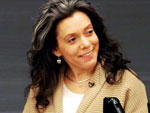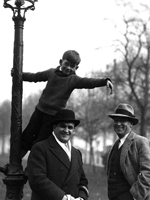I don't think a lot of kids necessarily have a natural connection to say, "Oh, this is how this relates to what happened when people were marching on the Liberty Tree after the Boston Massacre." But, I mean I think if you really—I think that's our job as educators, is to really create structured opportunities and lay out materials in a way so that those connections are a little bit easier to make. I try to be really deliberate in terms of the case studies that I've chosen.
And, you know, there's space now for variety, two of my friends and colleagues are currently teaching the class and I keep in touch with them. And I think that so often sometimes, especially in history education, that you tend to go a little bit too extreme and say, "Alright, 'minority' kids, let's look at 'minority' history because that's obviously what's important to you." And I think kids lose out.
And I think that's one thing the Teaching American History grant gets right: let's look at traditional American history because that's our history and that’s our story. And we have to really create opportunities for them to identify within it and to say they are products of it and also they are the promise of it.
So in the case studies I looked at I didn't want to just choose instances of—you know these are really strong young men and women in urban areas who look like you who did this. I want to make sure there's some of that, but I wanted to choose early 19th-century 13-year-old girls from Lowell, I wanted to look at community activists of different races, in different geographic areas, with different interests. I think in the end they have an identity as young people, and they have a voice that's necessary and important and it's worthy of being developed. And I think those are the connections I really try hard to make for them.

